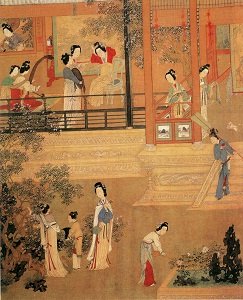Part VI – Exploration, Consolidation, Isolation: Ming Dynasty 1368 – 1644
Introduction
By the mid-1300s, local rebellions had broken out in large parts of Yuan China. Into this increasingly unstable China, the Ming Dynasty founder Zhu Yuanzhang, better known by his temple name Taizu, was born into a poor peasant family. Taizu was familiar with poverty through firsthand experience. His parents regularly moved to look for work or to avoid rent collectors. They were forced to give away several of their children because they could not afford to raise them. When Taizu was sixteen in 1344, the Yellow River flooded, causing famine and disease which took the lives of both his parents. At first, he sought refuge in a Buddhist monastery. When the Buddhist temple was destroyed by the Yuan military, Taizu joined a rebel group which fought against the Yuan rule. Taizu rose rapidly to military commander, and eventually recaptured Shangdu, the Yuan capital, located close to today’s Beijing. He drove the Mongols back into the northern grasslands in 1368, founding the Ming dynasty. He became the second peasant in all of Chinese history to become emperor.
The First Ming Emperor Taizu 1368-1398
Conservative Confucian Revival, Imperial Consolidation and the Ming Code
On founding the Ming dynasty, Taizu proclaimed the Mandate of Heaven for himself. Taizu was shrewd, hard-working and ruthless. Influence by Daoist notions of heavenly autocrats, Taizu endeavored to exalt the role of Emperor. He wished to create a dynasty where subjects obeyed their superiors, and where those who committed crimes were promptly punished. He called for a conservative restoration of Confucian order. He denounced the Mongols for their failure to respect Chinese moral standards, both in their familial relations and in their political practices. In particular, he condemned the Mongol marriage institution by which a widow was passed to other members of the husband’s family. Taizu was also against the constant succession struggles that marked Mongol power. He outlawed the many unorthodox cults that had thrived during the end of the Yuan Dynasty, instead encouraging Confucian social hierarchy, particularly filial piety and undivided loyalty to the emperor. At the same time, however, the Ming Dynasty held possessively the new frontiers which the Mongols had conquered.
Taizu was committed to seeing that the people of China should not have to experience the poverty of his family and worked sympathetically to improve the plight of the poor. He collected villages into self-regulating units of 110 households and made village elders responsible for tax collection and records, as the first step toward allocating service and tax liabilities more fairly. He cut government expenses wherever he could in order to reduce tax burdens further. The two million strong army, for instance, was made largely self-supporting by allocating land to soldiers’ families to farm. Taizu also established local schools so that the sons of commoners could learn to read and write. His work was advanced by decades of relatively climate weather.
His peasant background made him wary of official scholars. Taizu passed legislation that centralized political control, creating a significant expansion of imperial power at the expense of civil officialdom. He imposed high tax rates on the rich and forced thousands of wealthy families from the Southeast to settle elsewhere, especially in the capital. In order to repopulate areas devastated by warfare, famine and disease, Taizu ordered great numbers of Chinese people to relocate from the south to the north. He was ruthless to those subordinate officials he distrusted, executing over 100,000 people during his 30-year rule. Unable to have confidence in any Prime Minister, Taizu dealt directly with officials on matters large and small. Like the first Emperor of the Qin, Taizu worked through huge piles of paperwork daily.
By the early 1400s, some 200,000 soldier-farmers brought an additional 350,000 acres under the plow. In the frontier areas, the Ming government followed a policy of dual administration. Places with large Han populations were governed by nationwide Ming law codes and tax regulations. In places where native tribes were clearly in control, the Ming identified tribal rulers as hereditary chieftains. The tribal chiefs were expected to maintain order and were required to help the Ming if nearby tribes were problematic and were to send tribute in return for which the tribal chief would receive significant gifts in exchange.
Despite the mutual benefits of this system to both local chiefs and the Ming government, violent conflict between settlers and indigenous populations was not uncommon.
An enduring Ming achievement was the Great Ming Code known as the Da Ming Lu of 1397. The code had 460 articles organized by sections on personnel, revenue, rites, military affairs, penal affairs and public works. The code was conceived to maintain an idealized social hierarchy, so the punishments were most severe for those who transgressed their superiors. Wishing to consolidate social stability, it was legislated that the code never be altered. The code underpinned a Ming government that at the time was the largest and most rationally organized administrative system in the world. The government was divided into parallel military and civil hierarchies, where civil officials were recruited through the traditional examination system, and military officials were recruited through a combination of examinations and heredity.
Taizu’s new dynasty faced two major challenges. Its capital on the Yangtze River was far from the northern border where potential rivals essentially had a free hand. The court’s many imperial princes could also prove a threat to the throne as, for some, their hunger for power was greater than their loyalty to the emperor. Taizu’s solution was to legislate that only the oldest son, the heir apparent, was allowed to stay in the capital, with the rest being sent to frontier regions where they participated in defense and oversaw the military commanders on the emperor’s behalf. Yet, when the heir apparent died before becoming emperor, the ensuing struggle for power led to civil war. Zhu Di, a senior surviving uncle, eventually won the throne and took the reigning name Yongle – meaning Eternal Happiness.
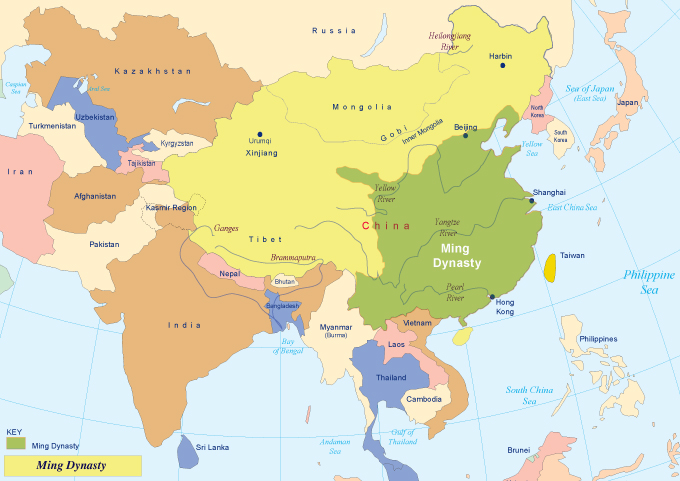
Ming Emperor Zhu Di – The Yongle Emperor
Forbidden City, Grand Canal, Zheng He’s Naval Voyages and Consolidation Inward
Yongle consolidated power quickly under a Confucian hierarchy. He abolished military escorts for imperial princes and moved the capital to Beijing in order to be closer to the restive north. Yongle oversaw the building of the Forbidden City, the home of all Chinese emperors until the end of China’s dynasties in 1911 and still one of China’s most iconic structures. To supply Beijing with grain, the Grand Canal was brought up over western Shandong through a series of fifteen locks, a significant engineering accomplishment. A flotilla of 15,000 boats worked by 160,000 soldiers oversaw the transport of goods from south to north and north to south. In places, these loaded barges were pulled by men attached to ropes.In order to bolster his legitimacy domestically, and to enhance China’s standing internationally by demonstrating China’s wealth and power overseas, Yongle created what was the largest naval fleet in the world. Under a Chinese Muslim, Admiral Zheng He, Yongle sent his fleet on seven expeditions between 1405-1433, ranging as far away as Arabia and Africa, and perhaps even as far away as North and South America (exactly how far the fleet went remains a matter of historical debate). The world today may have been a very different place if Yongle used his fleet to conquer and control foreign territory, as the Europeans did 200 years later, instead of using it to create diplomatic engagement and exchange.
Yongle also personally led five military campaigns into Mongolia where he was eventually killed. After his death, Ming power was never again projected into Mongolia, and the Ming defense policy against the northern “barbarians” shifted instead to a reliance on static walls, fortifications and outposts. For example, the Great Wall was significantly rebuilt and extended during this period and many of the most famous sections that still exist today were constructed during this time.
Yongle’s diplomatic sea voyages were discontinued due to expense and due to a general closing inward of court policy. Instead, the Ming consolidated its foreign relations around the tributary system where vassal states recognized Chinese superiority and where China recognized paternalistic obligations to come to the aid of loyal vassal states. The Ming made good on these paternal obligations, sometimes at considerable cost. In 1407, for instance, the Ming sent military assistance to Vietnam to bolster the collapsing Tran Dynasty. Faced with a rapidly deteriorating situation, the Ming tried to annex the territory outright, but was forced to retreat due to widespread armed resistance.
This was a crucial period in China’s history, where China chose isolation almost precisely at the point where Europeans were beginning their outward expansion. This isolation was compounded by the fact that the Ming examinations were noteworthy for their narrowness, testing above all knowledge of the four books – Analects, Mencius, Doctrine of the Mean and the Great Learning- as interpreted by the Song scholar Zhu Xi. After 1487, examination essays were required to be written in a fixed eight-part format known as the “eight leg” essay style. This meant, at a time of rapidly expanding international knowledge and technological development, the leaders of China were educated in a very narrow band of knowledge which poorly prepared them for a rapidly changing world.Nevertheless, the examinations continued to provide Chinese citizens with real opportunity for advancement. In order to ensure that the richest areas of the country did not monopolize the civil service, provincial quotas were instituted. As importantly, the Ming added a lower tier to the degree system, thus greatly expanding the numbers of degree holders. By the 16th century, there were over 100,000 government students, about one out of every 3-400 adult males. These men dressed in demarcated caps and sashes, were freed from labor service and were sometimes given incomes. Their titles distinguish them as community leaders and enabled them better access to jobs if their needs so required.
The Ming Dynasty after Yongle
Foreign Trade, Growing Population, European Missionaries, Court Struggles and Financial Stress
After Yongle died, foreign trade slowly continued to grow. China’s population more than doubled during the Ming dynasty, from between 60-80 million to between 150-200 million. Small market towns emerged all over the country. Regional specialization rose as villages benefited from the availability of cheap water transport to engage in cash cropping. By the 17th century, the Yangtze River Delta area had become the center for cotton and silk production, coastal Fujian specialized in tobacco and sugarcane, and Jiangxi was known for its porcelain manufacturing. This market-driven economic activity occurred despite a continued Confucian suspicion of profit and governmental disregard of economic growth beyond the state’s narrow objectives.
More land in southwest China also came under cultivation. By the 1500s, new crops from the Americas – tobacco, corn, peanuts, tomatoes, sweet red peppers, potatoes and sweet potatoes – were introduced into China. These agricultural products proved to be well suited to the hilly soil that had not previously been farmed. The lower Yangtze Valley once again became one of the most prosperous areas of China, particularly as Spanish silver from the Americas flooded into the country in exchange for silk, porcelain and tea. From the late 1500s onwards, Chinese merchants migrated throughout South East Asia forming flourishing minority communities.This international sea trade was, at times, hampered by both Japanese and Chinese piracy. By the mid-1500s, European traders also became more influential in China’s trade system. By 1557, the Portuguese had established a permanent trading post on Macao. The Spanish took possession of the Philippines in the 1570s, and a large Sino-Spanish trade was established in Manila. By 1622, the Dutch had established a base on the island of Taiwan from which they raided the Chinese coast and looted Chinese ships. The English and Japanese also stepped up their own efforts to expand their maritime trade.
The development of European trade and piracy in the region also brought with them European missionaries intent on converting the Chinese to Christianity. This was particularly true of the Catholic Jesuits. As part of their missionary, the Jesuits engaged in an exchange of knowledge with the Chinese court. The Jesuits sought an understanding of the history, geography, languages and literatures of the East, while seeking to spread Christianity and the best of European culture. China benefitted from learning about advances in Western science and technology.
By making parallels between the Chinese worship of one Supreme Being which the Chinese called the King of Heaven, Catholic Jesuits argued that the Chinese could continue their own rites and rituals, particularly ancestor worship, while converting to Christianity. Their efforts at conversion might have significantly succeeded if a series of Papal Bulls issued from 1704-1742 did not condemn Chinese Rites and forbid any further accommodation of Chinese tradition. Nevertheless by 1700, there were an estimated 200,000 Christians within China.
By the beginning of the 1600s, the fabric of the Ming dynasty was beginning to fray. Age-old infighting between scholar-officials and eunuchs once again increasingly paralyzed the court. In 1625 for instant, the eunuch Wei Zhongxian gained significant influence. He had thousands of scholar-officials jailed, tortured and killed. Greater urbanization, increased literacy, and an expanding publishing industry created greater social mobility. It also fueled a dynamic which both questioned and undermined existing neo-Confucian orthodoxies. A rapid rise in population also put stress on the social fabric. Perhaps most problematically, the Ming court was locked into the idea of preserving a golden age of agrarian, Confucian simplicity in a world that was beginning to change rapidly around them.
Compounding these issues was the fact that the Ming Dynasty was becoming increasingly bankrupt by the turn of the seventeenth century. Ming government expenses increased as its population and as its bureaucracy became less efficient. Additionally, maintaining the imperial clan was increasingly ruinous. In 1619, for example, 23,000 clansmen were given incomes. Military campaigns were also a huge drain. Between 1592-1598, China launched a massive campaign into Korea in order to defend it against a Japanese invasion, eventually costing the treasury 26,000,000 ounces of silver.
These fiscal problems were aggravated by the collapse of silver flows into the country. In 1639, the Japanese refused to let traders from Macau into Nagasaki, eliminating a large source of silver for China. A few months later, Sino-Spanish tensions interrupted the inflow of silver from trade with the Philippines. The interruption of the silver trade caused rapid deflation within the economy, leading to the hording of the silver that remained. This in turn led to the stockpiling of grain, creating artificial famines. Tax defaults became extensive as did peasant riots. In such difficult conditions, the Ming government failed to successfully collect its usual taxes, much less the additional revenue required to put down peasant rebellions and to address famine.
In 1642 a group of rebels cut the dikes of the Yellow River, killing several hundred thousand people by the ensuing flood and by the subsequent famine and disease. China’s population dropped by tens of millions during these decades. The rebels’ leader, Li Zicheng, eventually managed to capture Beijing, and in face of this defeat, the last Ming emperor hanged himself.
In order to combat the rebellion, the Ming military commander, Wu Sangui, requested the assistance of a formidable army of Manchu nomadic troops to help him reclaim Beijing. The Manchus were descendents of the Jurchen Jin Dynasty rulers who had captured North China during the Song Dynasty. Instead of retreating with the wealth they had been promised after having restored stability to Beijing, the Manchus claimed the Mandate of Heaven for themselves and proclaimed the creation of Qing Dynasty.
Dynastic Themes present in China Today
China’s north remained a continual preoccupation for Chinese leaders of the Ming dynasties. There was a constant need to protect China from Mongol and other nomadic incursions. One result of this was the resettlement of the imperial capital to Beijing, where the Forbidden City was constructed. Today, the Forbidden City is a UNESCO heritage site, and one of the most visited attractions in China. It is a powerful symbol of the importance of China’s dynastic past and the entrance gate, Tian’anmen, was the site from which Mao Zedong proclaimed the founding of the People’s Republic of China in 1949.
Another echo of Ming culture that can be seen in today’s China is the quota system that was introduced to ensure a wide range of candidates from geographically diverse parts of China would compete in the civil service examinations. Today, the top universities in China reserve places for students from each locale (and in many instances from specific schools) in order to promote equality of opportunity. Just as in Ming times, this can be a double-edged sword. While quotas certainly allow students from less developed areas of China the opportunity to win a place at one of the country’s most prestigious universities, in some cases it prevents students from more remote provinces from winning places because there are not enough quota places for the students demanding them.While the second Ming emperor, Yongle, involved China in international expeditions, both in Mongolia and through extensive naval expeditions, subsequent emperors retreated within China’s borders, focusing instead on the propagation of the traditions of their ancestors. This point in China’s history proved to be pivotal as the Chinese lost a valuable opportunity to learn about the wider world and its threats. When the Chinese finally came face-to-face with global powers, they eventually succumbed to the greater firepower of the Europeans. That the Chinese had invented gunpowder centuries before the Europeans began to use it provides a stark illustration of their failure to use their early advances to prepare themselves for the world ahead.
However, there is another side to this story of apparent missed opportunity. The rise of China today has caused much concern in a rapidly changing economic and political world. Much debate has been given to China’s ultimate intentions. China’s expansionist territorial ambitions in the Islands in the East and South China Seas have raised much concern. That said, in Africa for example, China enjoys much credibility with former Western colonies, by promoting the narrative that, although it reached Africa with the largest naval force in the world of the 1400s, it never tried to conquer African land or enslave its people.
As it was during the Ming dynasty, China’s engagement in the world today will be largely driven by economic concerns. It wishes to acquire resources and technology from abroad and to find markets for its products. Otherwise, one of its most important foreign policy principles – that no country should engage in the internal affairs of another country – reflects China’s overwhelming desire that its domestic affairs remain the preserve of Beijing alone; at least to some extent, this in turn acts as a restraint on China’s ability to interfere with the sovereignty of other nations.
What Happened Next?
The success of the Manchus in crushing the remnants of the Ming Dynasty led to the establishment of China’s second non-Han Chinese led dynasty, the Qing. Though it survived over two and a half centuries, it proved to be the last in China’s long dynastic history. A series of military defeats by foreign powers and concomitant internal rebellions precipitated the 1911 revolution that brought about China’s First Republic.


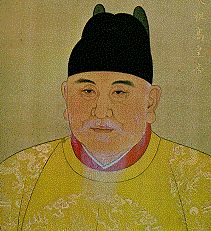
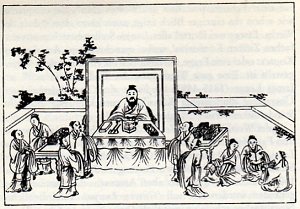

![By calflier001 [CC-BY-SA-2.0 (http://creativecommons.org/licenses/by-sa/2.0)], via Wikimedia Commons](https://chinafolio.com/wp-content/uploads/2010/05/Forbidden-City-Beiing-wiki.jpg)
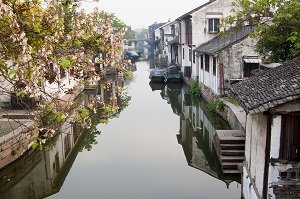
![By AlexHe34 (Own work) [CC-BY-SA-3.0 (http://creativecommons.org/licenses/by-sa/3.0) or GFDL (http://www.gnu.org/copyleft/fdl.html)], via Wikimedia Commons](https://chinafolio.com/wp-content/uploads/2010/05/Ming-era-Commentaries-of-the-Analects-of-Confucius.jpg)
![By User:Vmenkov (Own work (own photo)) [GFDL (http://www.gnu.org/copyleft/fdl.html), CC-BY-SA-3.0 (http://creativecommons.org/licenses/by-sa/3.0/) or CC-BY-SA-2.5-2.0-1.0 (http://creativecommons.org/licenses/by-sa/2.5-2.0-1.0)], via Wikimedia Commons](https://chinafolio.com/wp-content/uploads/2010/05/Peanut-farming-in-Jiangxia-Province-wiki.jpg)
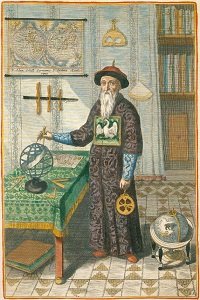
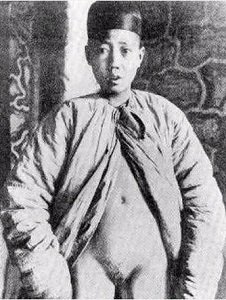
![By kenner116 (IMG_2334) [CC-BY-2.0 (http://creativecommons.org/licenses/by/2.0)], via Wikimedia Commons](https://chinafolio.com/wp-content/uploads/2010/05/Prestigious-Peking-University-wiki.jpg)
